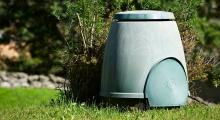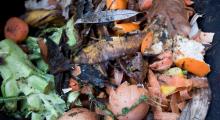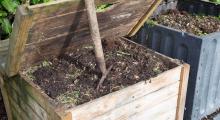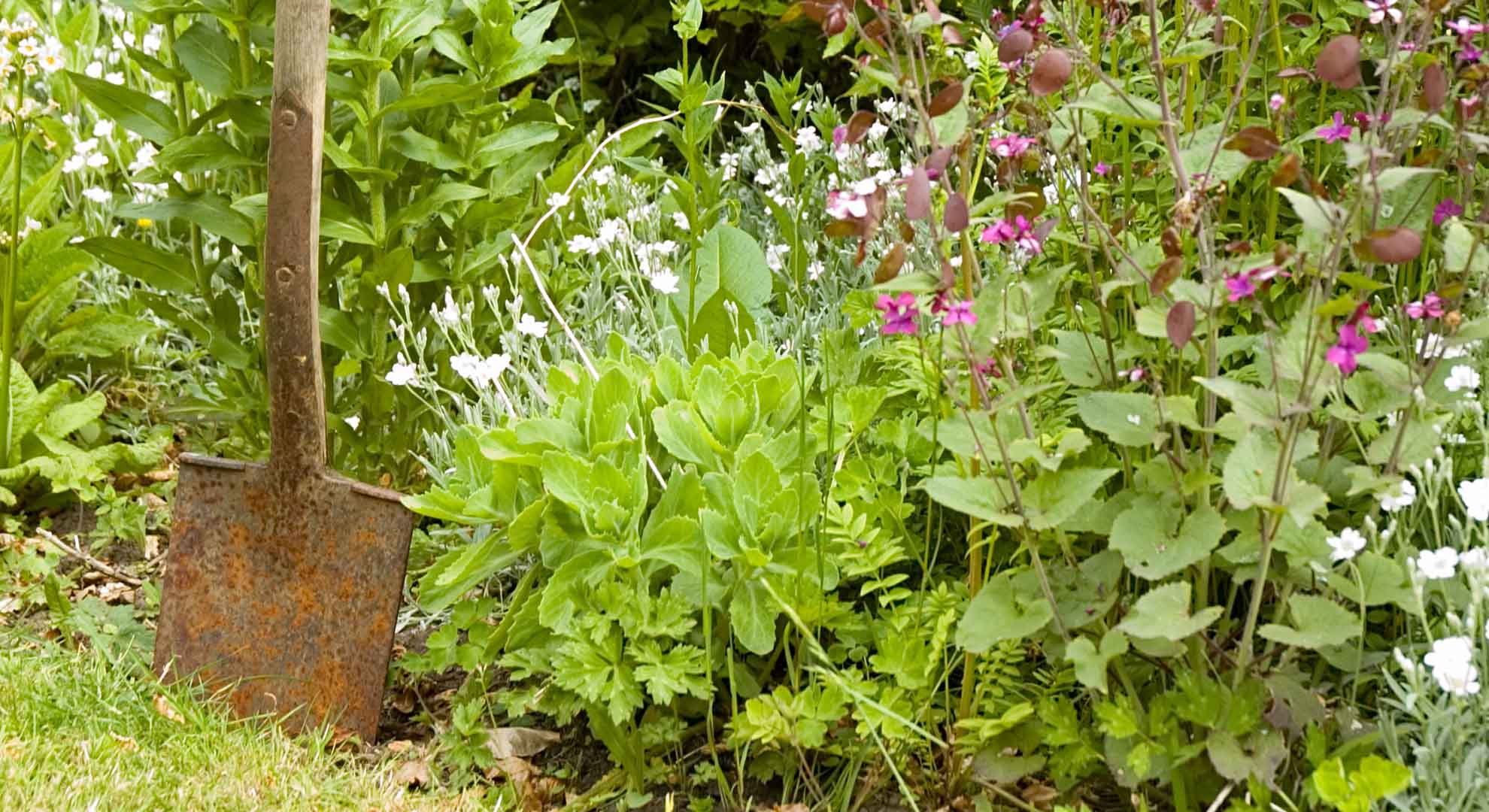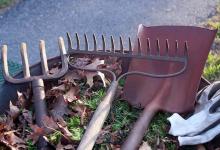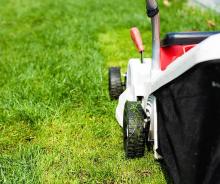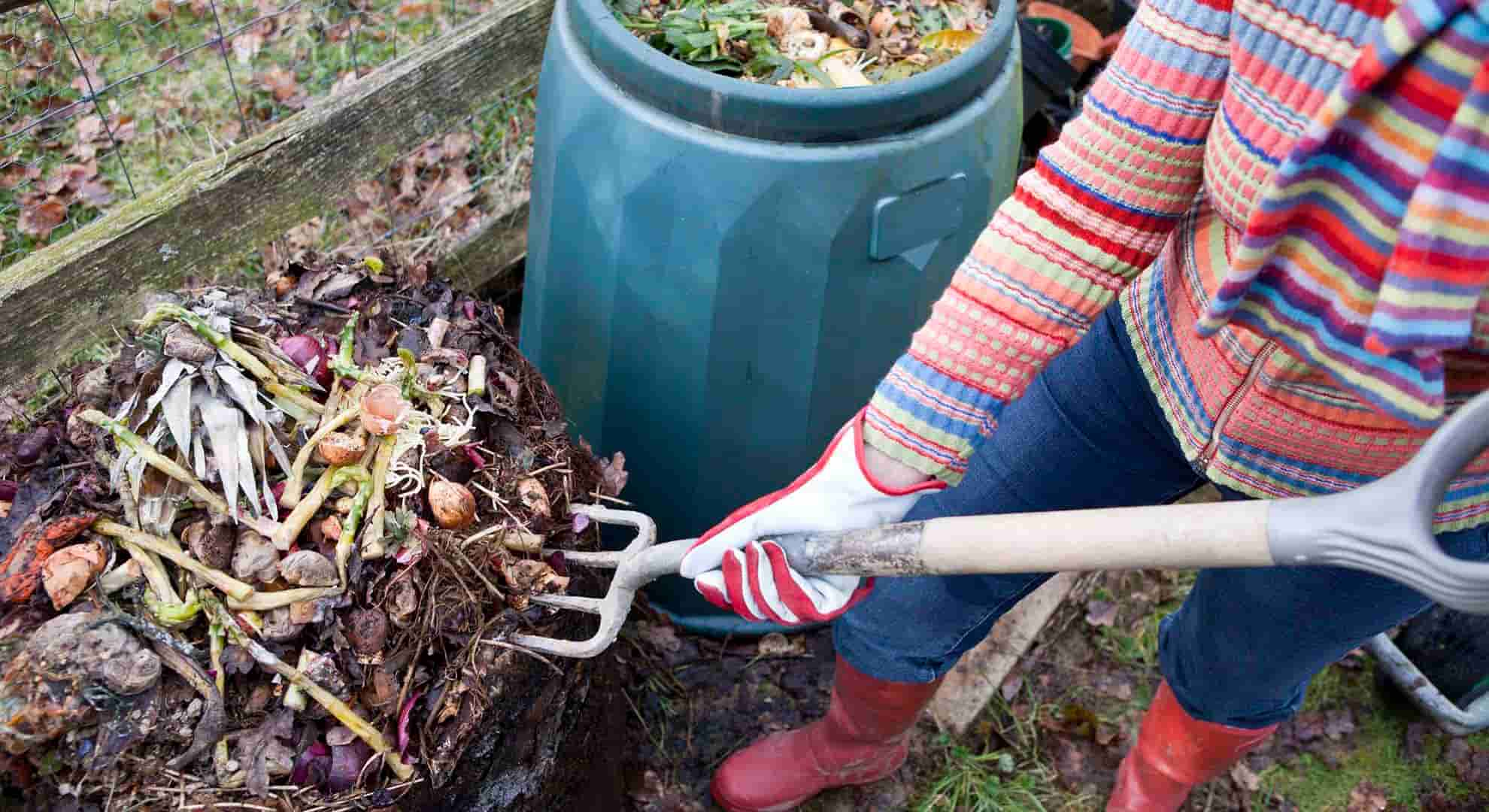
An easy guide to composting at home
Although many local councils collect food and garden waste, home composting doesn’t involve lorries and transport with the bonus of creating a nutrient-rich food for your garden. It's easy to make and easy to use.
Why compost?
If you don’t currently have a food and or garden waste collection service, then your waste will be getting sent to landfill.
When organic material such as garden waste and food waste breaks down in landfill it produces a harmful greenhouse gas called methane, which contributes to the climate crisis.
Some of this organic material can be composted at home, and what’s more, you’ll get free fertiliser for your garden and plant pots to keep them looking beautiful.
When organic matter is sent to landfill the waste produces methane as it breaks down which contributes to the climate crisis.
Share on
Setting up your compost bin
Closed compost bins are often most popular, especially if you are worried about the look (and smell) of your bin. Find a bin that’s about the height of your waist, too small and you might find that the composting process doesn’t work as well.
Pick your site – ideally in a reasonably sunny spot on bare soil. If you have to put your compost bin on concrete, tarmac or patio slabs then add a layer of paper, twigs and existing compost on the bottom to help attract worms and other helpful organisms.
Once you’ve started filling your compost bin it won’t be so easy to move so you’ll also want to make sure you choose a place where you can easily add ingredients to the bin and get the compost out.
What can I compost?
There is a lot that can go into your compost bin, from the usual vegetable peelings and autumn leaves to some items that might surprise you – eggshells, hair and even the contents of your vacuum cleaner can all be emptied into the bin.
To make the best compost, aim for a 50/50 mix of both green and brown materials in your compost bin.
Green materials contain lots of nitrogen. They break down quickly and help to keep the compost moist. Green materials include:
- Cut flowers
- Fruit scraps and vegetable peelings
- Garden and house plants
- Grass cuttings/leaves
- Tea leaves/bags and coffee grounds
- Young annual weeds
Brown materials contain lots of carbon. They break down more slowly and add structure to your compost. They also create air pockets which are important for air circulation. Brown materials include:
- Paper items which can include scrunched up cardboard, egg boxes, toilet roll tubes, shredded letters, unwanted mail including envelopes with the windows taken out
- Straw and hay
- Egg shells
- The contents of your vacuum cleaner
- Hedge and woody trimmings like roses
What can't I compost?
Please do NOT put the following materials in your compost bin:
- Cooked food
- Raw meat and fish (including bones)
- Dairy products
- Bread and bakery products
- Diseased plants
- Coal or coke ash (a small amount of wood ash is ok)
- Cat or dog waste
- Nappies, glass, plastic, or metal
It is important only the right materials go into your compost bin. Continue to use your normal household bin and recycling services available to you for all other waste.
It’s a waiting game
It will usually take over twelve months for your compost to become ready for use, so now all you need to do is wait and let nature do all the hard work.
Keep on adding greens and browns to top up your compost and stir the pile now and again to help aerate the compost, help it to ‘cook’ faster and stop it from becoming matted down. Don’t worry if you can’t stir the pile - it will just take a little longer but will get there eventually.
Ready to feed your garden
Once your compost has turned into a crumbly, dark material, resembling thick, moist soil and gives off an earthy, fresh aroma, you know it's ready to use. Lift the bin slightly or open the hatch at the bottom and scoop out the fresh compost with a garden fork, spade or trowel.
Don't worry if your compost turns out a little lumpy with twigs and bits of eggshell, it’s perfectly normal for it not to look like the compost you buy in the shops – it is homemade after all. Any larger bits can be sifted out and returned to your compost bin for next time.
Your fresh compost is nutrient-rich food for your garden and will help improve soil structure, maintain moisture levels and keep your soil’s pH balance in check while helping to suppress plant disease.
It has everything your plants need, including nitrogen, phosphorus and potassium and it will help improve soils that are very acidic or alkaline. Compost improves your soil's condition and your plants and flowers will love it!
Once your compost has turned into a crumbly, dark material, resembling thick, moist soil and gives off an earthy, fresh aroma, you know it's ready to use.
Share on
Using your compost
Use in flower beds to help your new plants and flowers bloom by digging a 10cm layer of compost into the soil before planting.
If your flowers have already been planted, just spread a thin layer of compost-enriched soil around the base of the plants. Nutrients will work their way down to the roots and your plants will enjoy a healthy boost.
You can mix home compost with regular soil or leaf mould to create your own potting mixture for patio containers. About a third of the mix should be compost, slightly less when you are planting seeds. The reason for this is that homemade compost is too strong to use on its own for planting into.
Dressing your lawn with compost helps young grass take root and can make your garden healthier and greener.
First, you'll need to sieve the compost and remove any large twigs or any other items that have not quite broken down. Next, mix it with an even amount of sharp sand to compost as this will allow it to spread more easily. You will need a thin layer spread evenly over the lawn.
Mature lawns can really benefit from this little extra kick of nutrients but be aware that newly seeded or turfed lawns can be scorched by it.
Highland Community Composting Resource
Highland Council and the Highland Good Food Partnership have teamed up with Zero Waste Scotland to create an online resource to help communities and organisations get started with community composting projects. Find out more.

